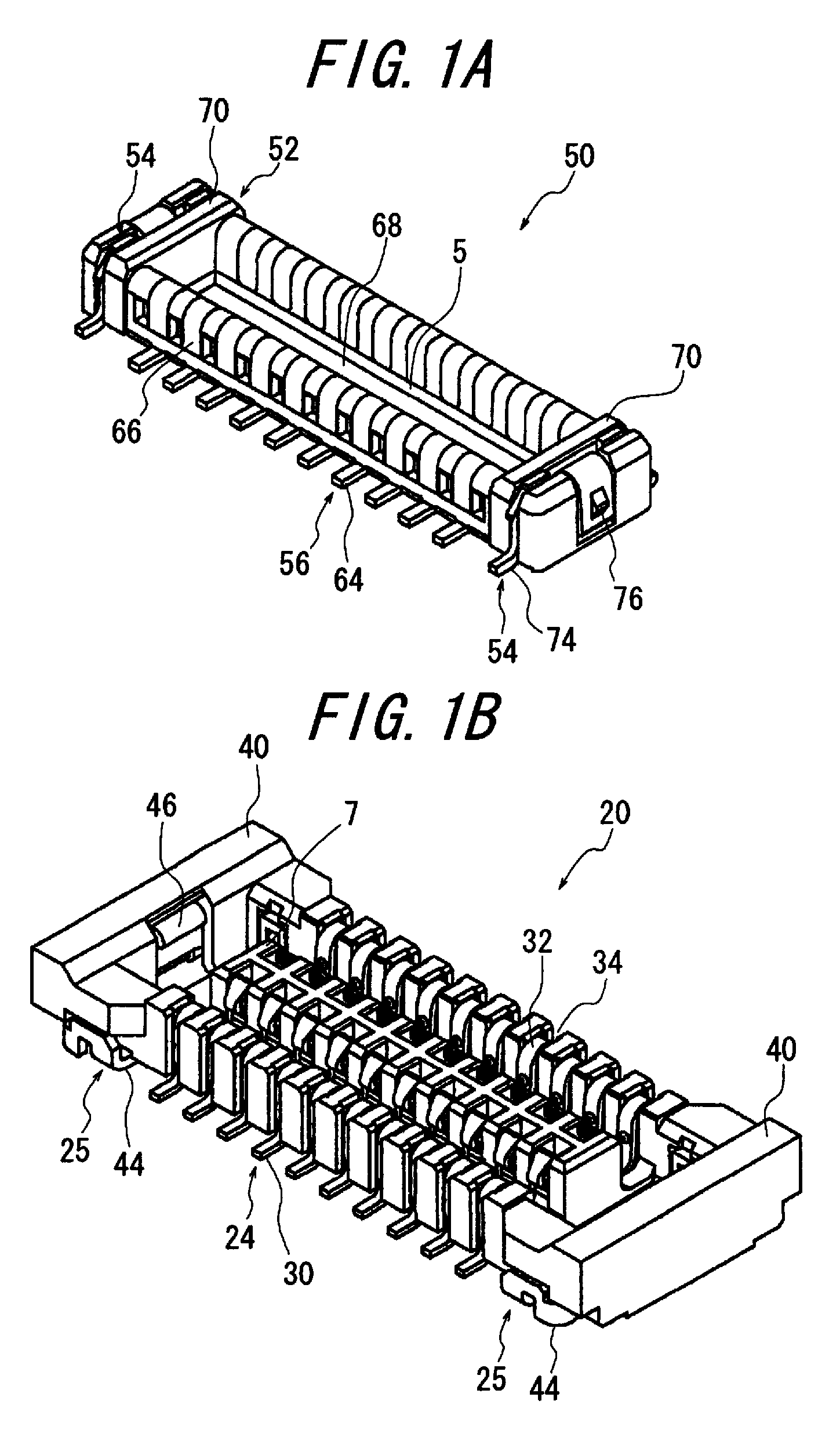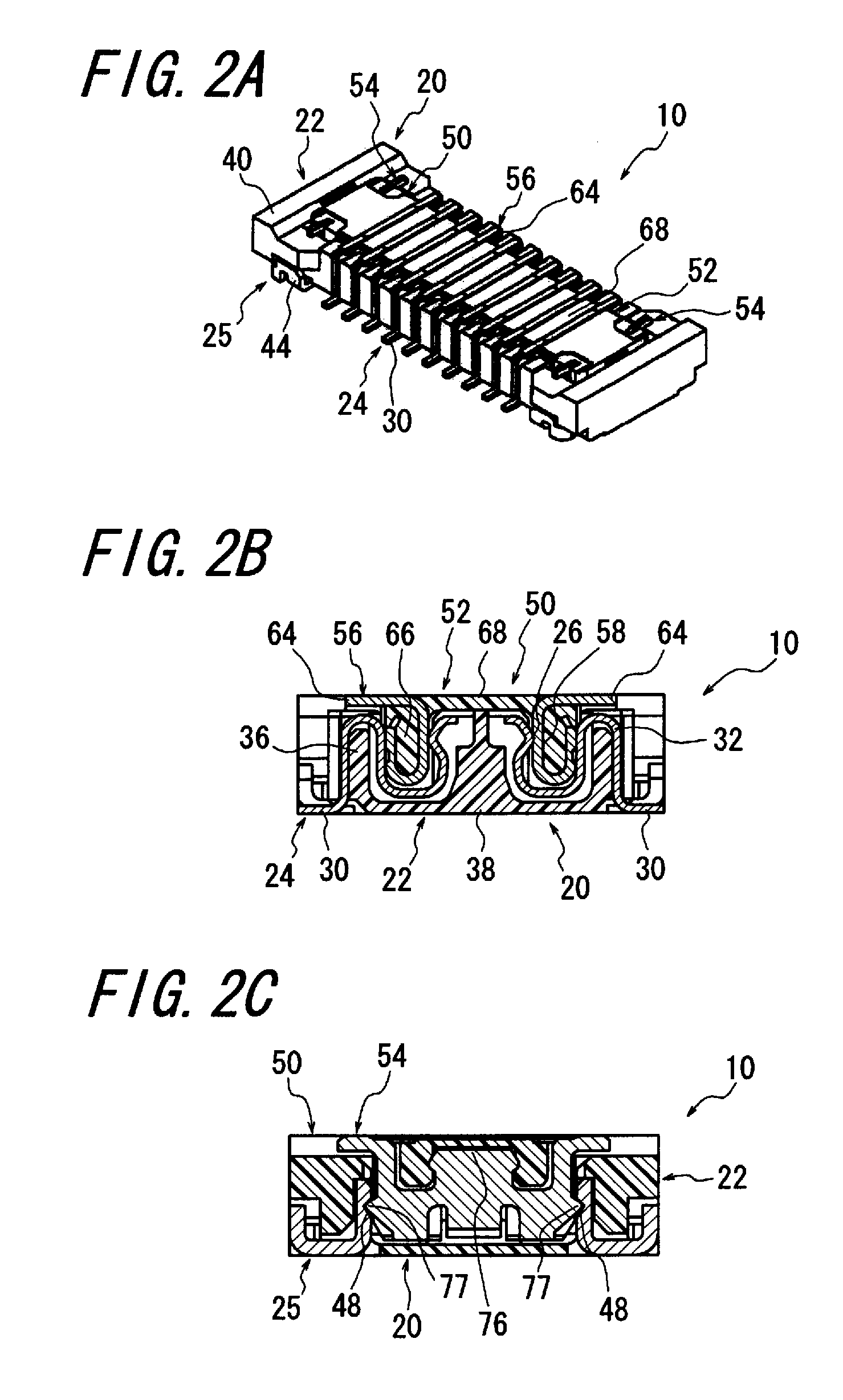Receptacle and a plug with fixtures to attach to substrates and engaging each other to form a power supply contact
a technology of electrical connectors and connectors, applied in the direction of coupling contact members, coupling device connections, fixed connections, etc., can solve the problems of not meeting the need to improve toughness, unavoidable use of multiple terminals (contacts) for power supply purposes, etc., and achieve excellent durability and reduce the overall height of the connector
- Summary
- Abstract
- Description
- Claims
- Application Information
AI Technical Summary
Benefits of technology
Problems solved by technology
Method used
Image
Examples
Embodiment Construction
[0037]The subject features of the invention lie in an electrical connector 10 for connecting substrates, including a receptacle connector 20 and a plug connector 50 to be detachably fitted with each other. Said receptacle connector 20 includes a plurality of receptacle contacts 24 and a block 22 for arranging and holding said receptacle contacts 24. Said receptacle contacts 24 each have a first contact portion 26 adapted to contact a mating contact, a first fixed portion 28 to be fixed to the block 22, and a first connection portion 30 to be connected to one of the substrates. Said plug connector 50 includes a plurality of plug contacts 56 and a housing 52 for arranging and holding said plug contacts 56. Said plug contacts 56 each have a second contact portion 58 adapted to contact said receptacle contact 24, a second fixed portion 60 to be fixed to said housing 52, and a second connection portion 64 to be connected to the other of the substrates. The receptacle and plug connectors ...
PUM
 Login to View More
Login to View More Abstract
Description
Claims
Application Information
 Login to View More
Login to View More - R&D
- Intellectual Property
- Life Sciences
- Materials
- Tech Scout
- Unparalleled Data Quality
- Higher Quality Content
- 60% Fewer Hallucinations
Browse by: Latest US Patents, China's latest patents, Technical Efficacy Thesaurus, Application Domain, Technology Topic, Popular Technical Reports.
© 2025 PatSnap. All rights reserved.Legal|Privacy policy|Modern Slavery Act Transparency Statement|Sitemap|About US| Contact US: help@patsnap.com



